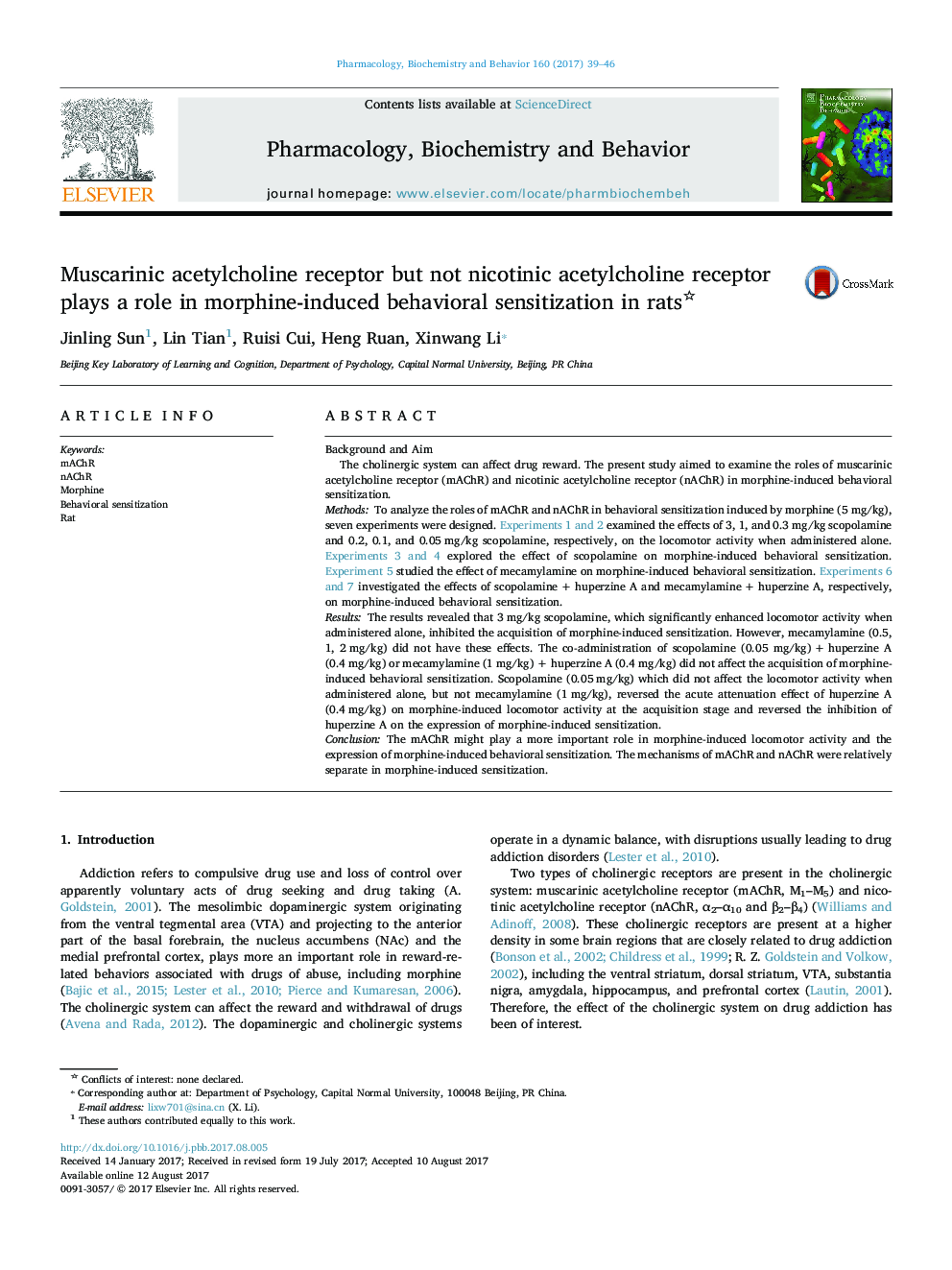| کد مقاله | کد نشریه | سال انتشار | مقاله انگلیسی | نسخه تمام متن |
|---|---|---|---|---|
| 5515150 | 1541827 | 2017 | 8 صفحه PDF | دانلود رایگان |

- The mAChR plays different roles in the acquisition and expression of morphine sensitization.
- Scopolamine (3Â mg/kg) inhibited the acquisition of morphine behavioral sensitization.
- Scopolamine (0.05Â mg/kg) reversed the inhibitory effect of huperzine A on morphine-caused locomotion.
- Scopolamine (0.05Â mg/kg) reversed the inhibitory effect of huperzine A on expression of sensitization.
- Mecamylamine did not affect morphine-induced behavioral sensitization.
Background and AimThe cholinergic system can affect drug reward. The present study aimed to examine the roles of muscarinic acetylcholine receptor (mAChR) and nicotinic acetylcholine receptor (nAChR) in morphine-induced behavioral sensitization.MethodsTo analyze the roles of mAChR and nAChR in behavioral sensitization induced by morphine (5 mg/kg), seven experiments were designed. Experiments 1 and 2 examined the effects of 3, 1, and 0.3 mg/kg scopolamine and 0.2, 0.1, and 0.05 mg/kg scopolamine, respectively, on the locomotor activity when administered alone. Experiments 3 and 4 explored the effect of scopolamine on morphine-induced behavioral sensitization. Experiment 5 studied the effect of mecamylamine on morphine-induced behavioral sensitization. Experiments 6 and 7 investigated the effects of scopolamine + huperzine A and mecamylamine + huperzine A, respectively, on morphine-induced behavioral sensitization.ResultsThe results revealed that 3 mg/kg scopolamine, which significantly enhanced locomotor activity when administered alone, inhibited the acquisition of morphine-induced sensitization. However, mecamylamine (0.5, 1, 2 mg/kg) did not have these effects. The co-administration of scopolamine (0.05 mg/kg) + huperzine A (0.4 mg/kg) or mecamylamine (1 mg/kg) + huperzine A (0.4 mg/kg) did not affect the acquisition of morphine-induced behavioral sensitization. Scopolamine (0.05 mg/kg) which did not affect the locomotor activity when administered alone, but not mecamylamine (1 mg/kg), reversed the acute attenuation effect of huperzine A (0.4 mg/kg) on morphine-induced locomotor activity at the acquisition stage and reversed the inhibition of huperzine A on the expression of morphine-induced sensitization.ConclusionThe mAChR might play a more important role in morphine-induced locomotor activity and the expression of morphine-induced behavioral sensitization. The mechanisms of mAChR and nAChR were relatively separate in morphine-induced sensitization.
Journal: Pharmacology Biochemistry and Behavior - Volume 160, September 2017, Pages 39-46